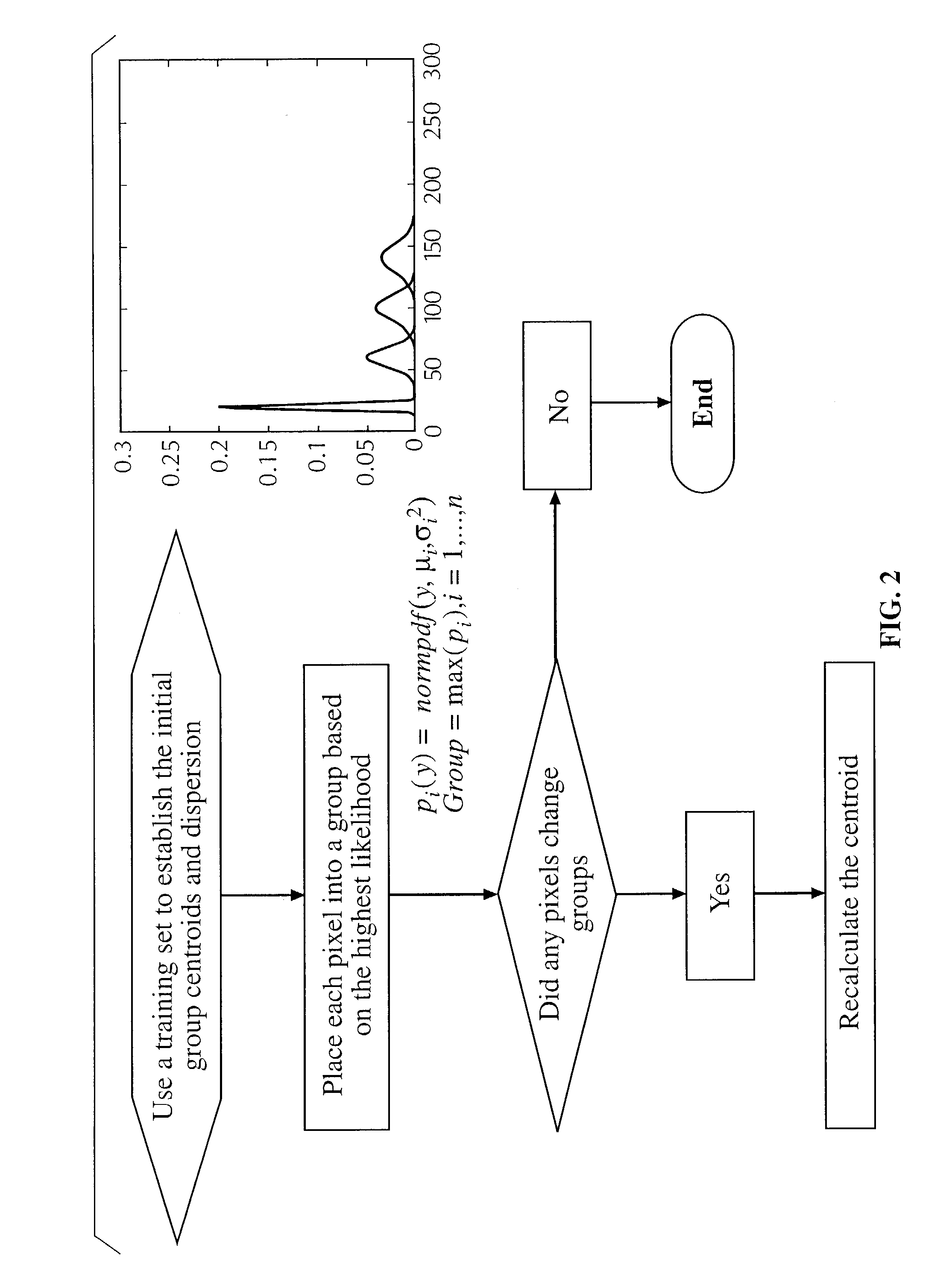Method for determining the efficacy of an anti-cancer treatment using image analysis
a technology of image analysis and anti-cancer treatment, applied in the field of ultrasonic image analysis, can solve the problems of inflammatory response, rapid deterioration, labor intensive, etc., and achieve the effects of reducing error variance, expanding statistical inference, and increasing discrimination between regions
- Summary
- Abstract
- Description
- Claims
- Application Information
AI Technical Summary
Benefits of technology
Problems solved by technology
Method used
Image
Examples
Embodiment Construction
[0059]A first aspect of the invention will be explained with reference to FIGS. 3 and 4, which show the basic geometry of a volume of scatterers corresponding to an image pixel, and a generalized ultrasound system.
[0060]The geometry of a single voxel 310 of scatterers, corresponding to a single pixel within the image, is depicted in FIG. 3. One tissue parameter that can change the brightness of the image is the number of scatterers within a voxel that corresponds to a single pixel. The mean pixel energy is proportional to the number of scatterers, and is related to the energy transmitted by transducer 320. Therefore, if the density of the scattering bodies increases, the number of scatterers within a voxel increases and the pixel brightness increases. Additionally, if the reflectivity of the scattering bodies increases, the pixel energy increases. Further, if the variation in the characteristic impedances increases, then the reflectivity of the region increases and it follows that t...
PUM
 Login to View More
Login to View More Abstract
Description
Claims
Application Information
 Login to View More
Login to View More - R&D
- Intellectual Property
- Life Sciences
- Materials
- Tech Scout
- Unparalleled Data Quality
- Higher Quality Content
- 60% Fewer Hallucinations
Browse by: Latest US Patents, China's latest patents, Technical Efficacy Thesaurus, Application Domain, Technology Topic, Popular Technical Reports.
© 2025 PatSnap. All rights reserved.Legal|Privacy policy|Modern Slavery Act Transparency Statement|Sitemap|About US| Contact US: help@patsnap.com



